St John's Anglican Cathedral
Parramatta
J. W. Walker, London, 1863
2 manuals, 20 speaking stops, mechanical action
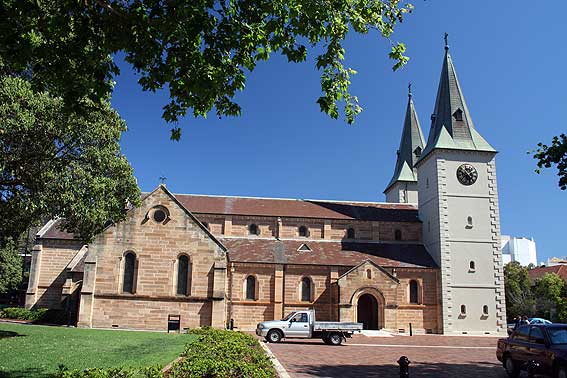
Historical and Technical Documentation by Kelvin Hastie
© OHTA 2005 (last updated October 2005)
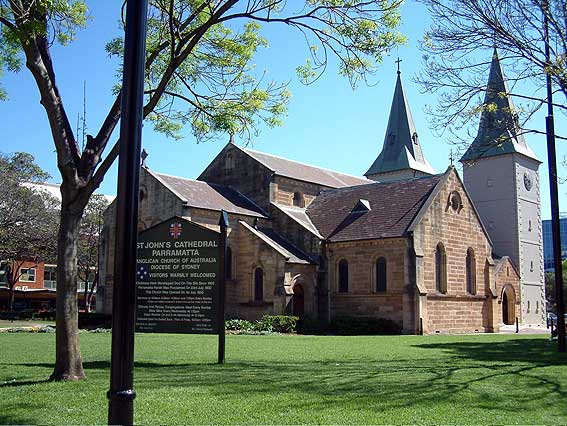
© PdL 2005
There have been several organs in St John’s: Graeme Rushworth records the first organ in St John’s as being an instrument owned by the Rector, The Revd Henry H. Bobart, son-in-law of The Revd Samuel Mardsen. Installed in 1841 it was removed in 1863 by Thomas Bridson, who installed it in St Paul’s Anglican Church, West Maitland, where it was destroyed by fire in 1866. No details survive as to the instrument’s maker, but it was “London built and of two manuals, pedals and 11 stops”.
[3]
The present instrument, of national significance, is one of the most substantial and best-preserved J.W. Walker organs of its period, being built as job. no. 712 and installed in 1863 at a cost of £359.
[4]
In 1880-81 three prepared-for stops (Great Trumpet 8, Swell Oboe 8 and Pedal Open Bass 16) were added and in c.1903 the instrument was moved from a west-end gallery to its present position on the floor of the north transept.
[5]
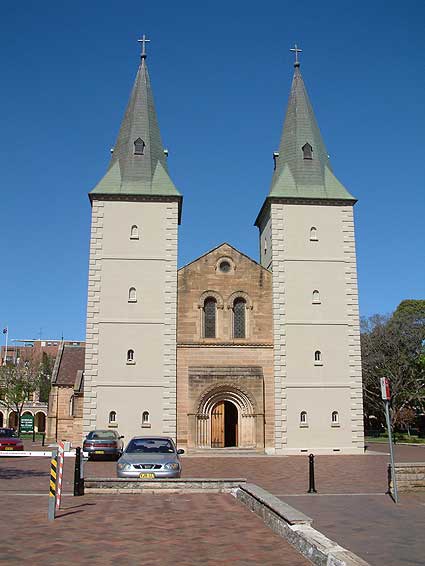
© PdL 2005
In 1930 a proposal to rebuild the organ by G.F. Hopkins (nephew of Dr E.J. Hopkins, of Temple Church, London, fame) was advertised, but this was shelved after his sudden death. In the early 1960s fresh proposals to rebuild and substantially enlarge the organ were provided by prominent organbuilders, Davis & Laurie, Hill, Norman & Beard and J.W. Walker & Sons. Action on the part of organists Ray Holland (subsequently appointed consultant), Warwick Mehaffey and David Kinsela, saved the organ from this fate and a restoration by Ronald Sharp and Mark Fisher was subsequently undertaken in 1966. The restored organ was rededicated by Archbishop Loane on 9 September 1966 and followed by an opening recital given by Ray Holland, aided by the choir of St Mark’s South Hurstville.
[6]
The 1966 restoration was, in many ways, a landmark in the history of organ conservation in Australia, as the advisers were conscious of the historic merit of the instrument and the restorers were sensitive (in an age of unbridled modernism) to retain virtually all original features, including the cone-tuned pipework, high pitch and short-compass swell stops. While the composition of the Swell Sesquialtera was modified by transposing the fifteenth rank to a seventeenth and new drawstop domes were provided, these changes may be considered mild for the period.
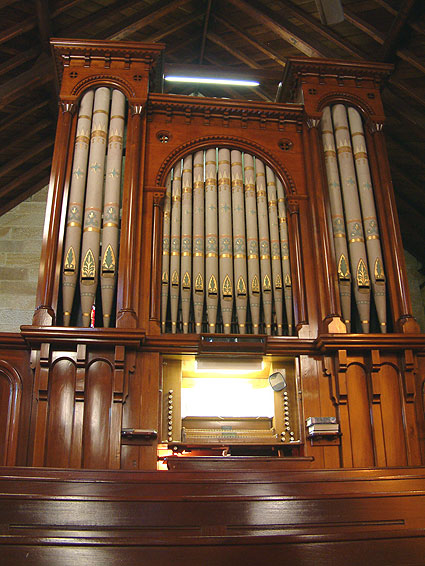
© PdL 2005
J.W. Walker 1863 (2/20 mechanical)
| GREAT Open Diapason Stopped Diapason Keraulophon Principal Flute Twelfth Fifiteenth Mixture Trumpet SWELL* Double Diapason Open Diapason Stopped Diapason Principal Fifteenth Sesquialtera Cornopean Oboe Tremulant PEDAL Open Bass Bourdon Principal |
8 8 8 4 4 2-2/3 2 III 8 16 8 8 4 2 II 8 8 16 16 8 |
+ # ¶ § ^ = # # |
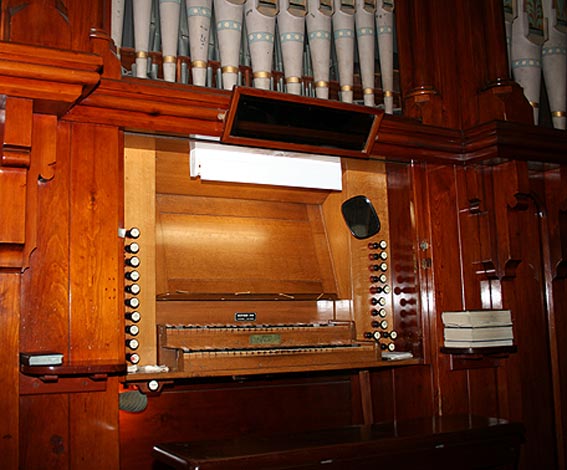
COUPLERS
Swell to Great
Great to Pedal
Mechanical action
Compass 56/27
4 composition pedals to Great
Hitch-down swell lever
No. of pipes = 1,093
Pitch a1= 452 Hz at 210 C
Wind pressure (in 1980) = 78mm (3”)
Mixture compositions:
Great Mixture III
C - b0 : 15.19.22
c1 - c2 : 8.12.15. [19]
c#2 - g3 : 1.8.12. [15]
Swell Sesquialtera II
c0 - g3 : 12.17 (originally 12.15)
+ Drilled for 4 ranks from c1. Order book states 200 pipes
* All stops of 44 note compass. C-B borrowed from bass octave of Great Stopped Diapason 8
¶ Shown as “Horn Diapason” in order book
§ Added after 1966 in place of non-original Vox Humana added on clamp c.1903
^ Composition changed from 12.15 to 12.17 in 1966
# Additions 1880-81 (tremulant later)
= shown as "Horn" in Walker order book
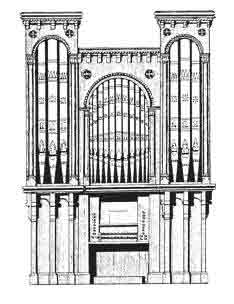
J.W. Walker, London, 1863
St John’s Pro-Cathedral, Parramatta
(drawing by Graeme Rushworth)
[1]
Rushworth, Historic Organs, 22 and The Revd Canon H.M. Arrowsmith, ed., The Cradle Church of Australia: the History of St John's, Parramatta: part one to the year 1910. Sydney: Pilgrim International, for the Church, 1975.
[2]
The Heritage of Australia : the illustrated register of the national estate. South Melbourne: Macmillan, 1981, p. 2/50
[3] Rushworth, Historic Organs, 24-25.
[4]
John Stiller, “Documentation of Pipe Organ built by J.W. Walker, 1863”. Organ Historical Trust of Australia, 15 October, 1980. The specification is also from this source.
[5]
Graeme Rushworth, “Organs and Organists of St John’s Anglican Pro-Cathedral), Sydney Organ Journal, 11/6 (December 1980/January 1981): 8-17.
[6]
St John’s Churh of England Parramatta. Service of Rededication of the Pipe Organ. Friday 9th September 1966.